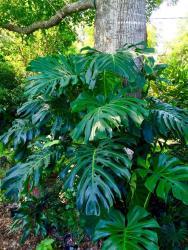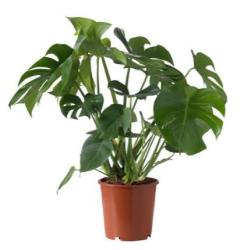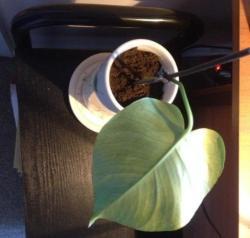Hi,
@futurenets. Yes, this is completely normal. That is a young Monstera deliciosa and in nature it is a vining/climber type of plant. It has roots that anchor the base in the ground (or wherever the seed germinated), but the as it grows, it will send out what are called "air roots" from along the stem. As these air roots come in contact with something (such as a tree trunk), they will latch on to it by producing additional little fibrous-like rootlets, providing both stability for the Monstera as well as another source of nutrients. You can grow it like this for a little while, but eventually (and soon) it will need something to climb. These are beautiful plants, and once they get attached to something and start growing, you will see a major change in the leaves - not only do they begin to change shape by developing more holes and slits in each leaf, but they will start to increase in size. In the right conditions, Monstera deliciosa can get HUGE! It's amazing and one of my absolute favorite plants.
This is a pic of mine growing out in my back yard. For scale reference, the trunk of the tree it is growing on is at least 2 feet wide. The largest leaves are probably about 3 feet or more wide. Overall, this towers over my head - at least to about 7 feet high. Hard to believe this is the exact same kind plant that you have growing there, huh?






